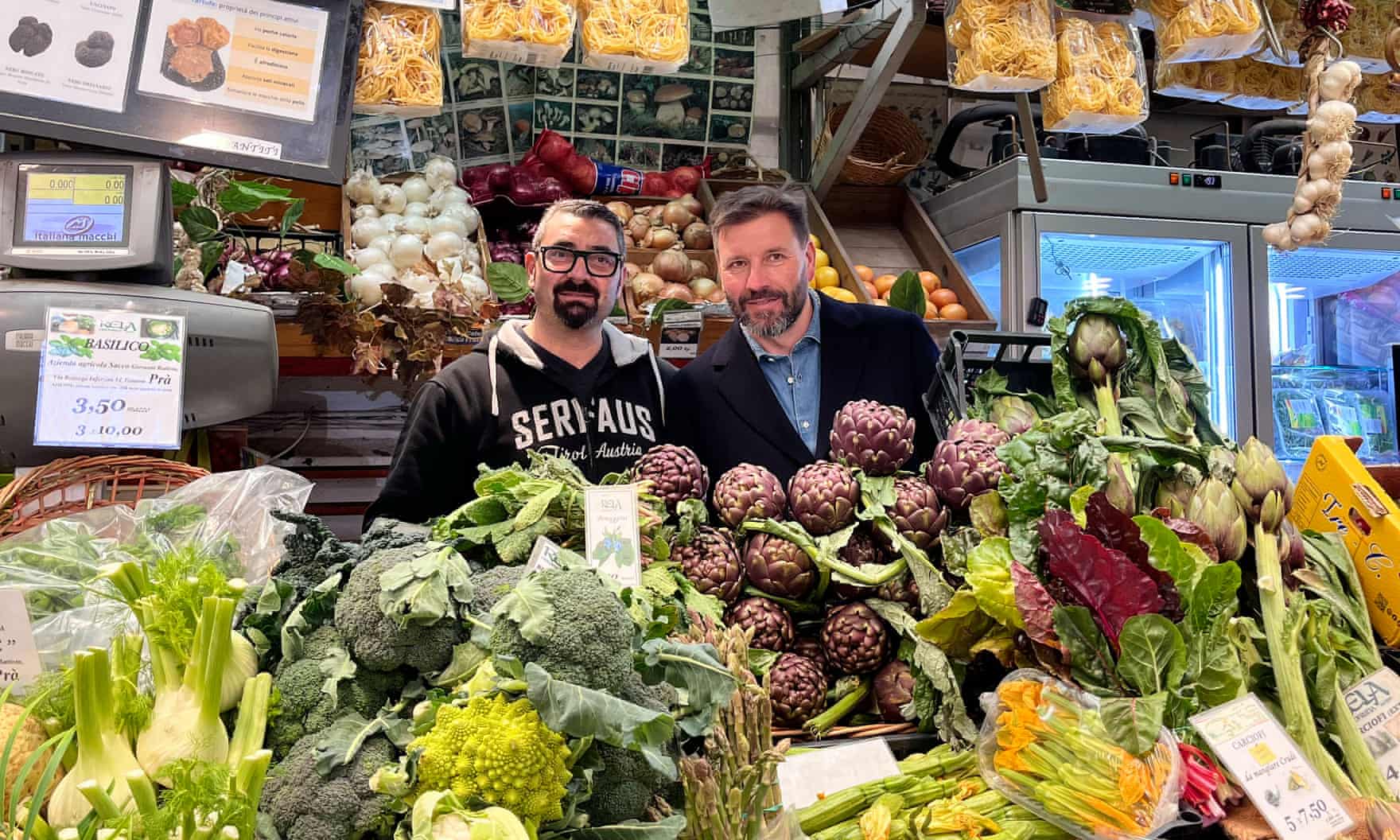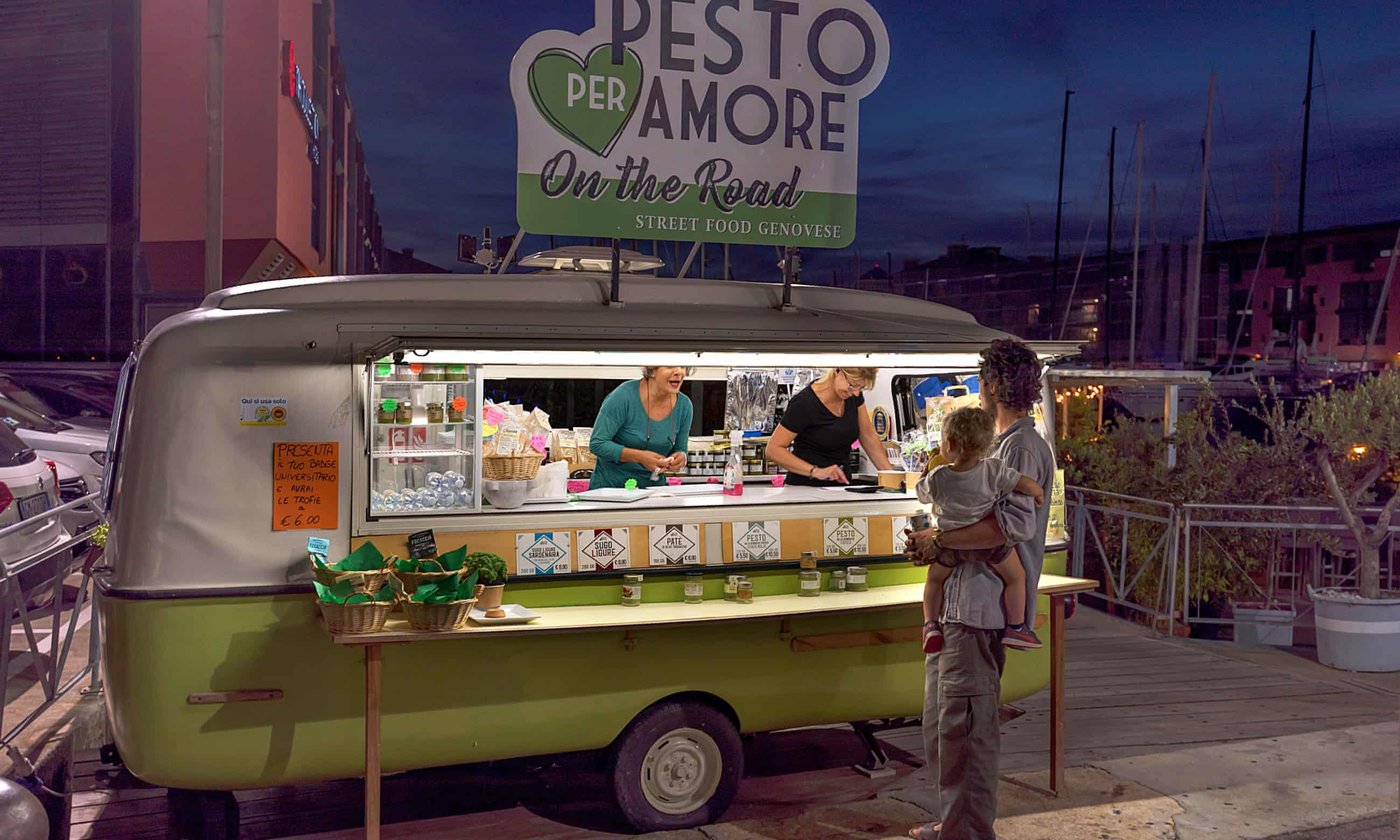Laura Coffey
From fluffy focaccia to creamy pànera, local Michelin-starred chef Ivano Ricchebono introduces our writer to a taste of the Italian port city
Genoa-born chef Ivano Ricchebono looks like a Hollywood actor playing a chef in a movie. His restaurant The Cook is in a 14th-century palazzo in the old town, and as I step into the dining room I stop and stare – the entire place is covered with frescoes. It’s wildly romantic. “People get engaged here all the time,” Ivano says with a smile. Awarded his first Michelin star in 2010, he has cooked for Stanley Tucci, and has an international reputation for excellence. But today he’s my tour guide – not to the blossoming fine dining scene but to the affordable (and equally delicious) fare enjoyed by locals every day.
Once a mandatory stop on the 19th-century Grand Tour, and known as “La Superba”, Genoa centre is full of impressive architecture that tells of this under-rated port city’s past as a rich and powerful republic. Squeezed between the sea and the Ligurian Alps, it’s just an hour and a half by fast train from Milan, and about the same down to the Cinque Terre. Among Italians the city is renowned for its culinary riches – almost everyone agrees that the pesto and focaccia here are the best in the country (there’s even a foccacia festival in May). Our plan is to walk through several neighbourhoods and taste as many of Genoa’s gastronomic delights as possible.

Ivano doesn’t speak much English and my Italian is horrible so I bring along Maria, a friend’s daughter, to translate. Our first stop, in the medieval heart of town, is at a tiny hole-in-the-wall cafe, Cremeria Buonafede. This is the best place for pànera, a sweet, soft, coffee-flavoured semifreddo invented in the city in the 19th century. Ivano orders a caffè con pànera, an espresso topped with a ridiculous amount of the stuff, dusted with a choice of cinnamon or cocoa powder. I just have a scoop of pànera. It feels pretty decadent for 10am, but then the smart older Italian couple at the bar next to us are breakfasting on maritozzi, brioche buns stuffed with an unreasonable amount of cream.
We walk off (some of) the calories as we continue through the tangle of streets and almost impossibly tiny alleys called vicoli. Streets have poetic names such as Piazza dell’Amor Perfetto (perfect love). Via Giuseppe Garibaldi is lined with palazzos built by the Genoese aristocracy during the Renaissance. “The noble families were all fighting with each other to make the most beautiful palaces,” says Ivano (they’re open to the public on certain days, known as “Rolli days”; the next are 17-19 May; the newly reopened Palazzo Rosso is now a museum, open Tues-Sun, €9).

We head west towards the port. Genoa constantly reminds you it’s a place where real people live, not a picture-postcard museum of the past. At Piazza San Giorgio, on the boundary between the old town and the seafront, we stop at Friggitoria San Giorgio, which sells bright yellow cones of fried fish to take away. The fish comes fresh off the boats at 7am every day, and it’s no ordinary selection: there are anchovies fried in chickpea flour; calamari and octopus; to be eaten on a bench overlooking the sea. They haven’t started frying when we arrive, so I take Ivano’s word for the quality of the food, and we keep walking
